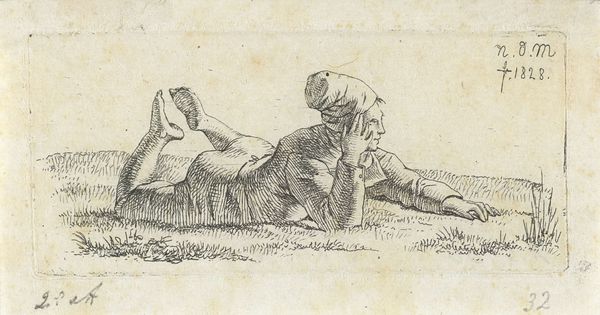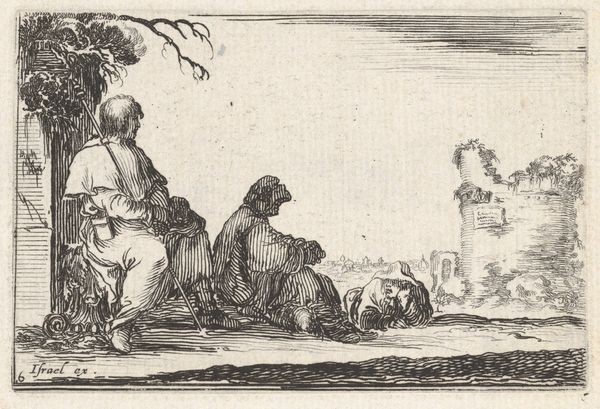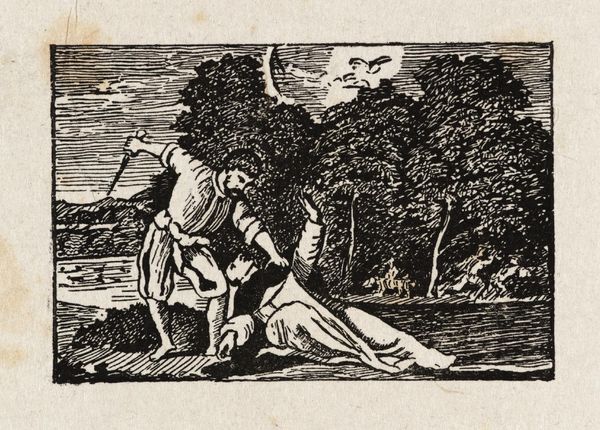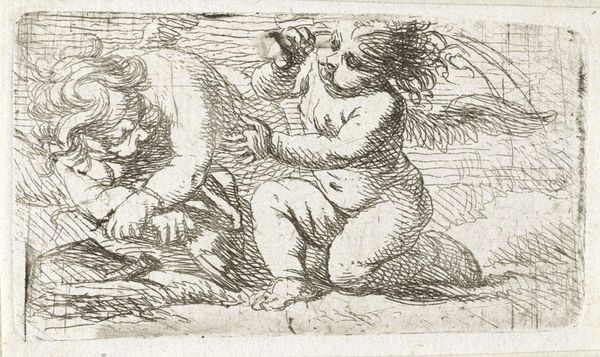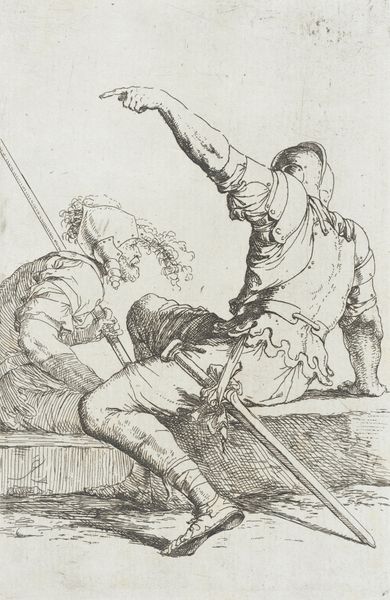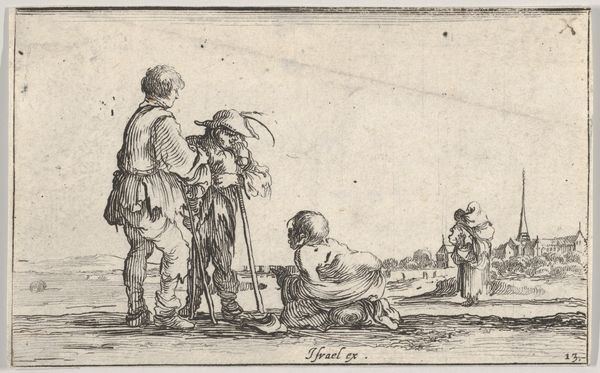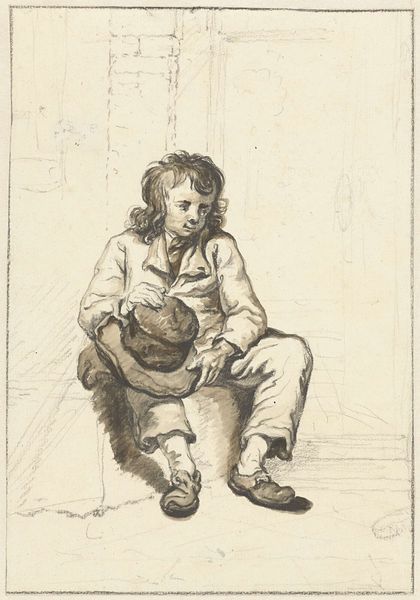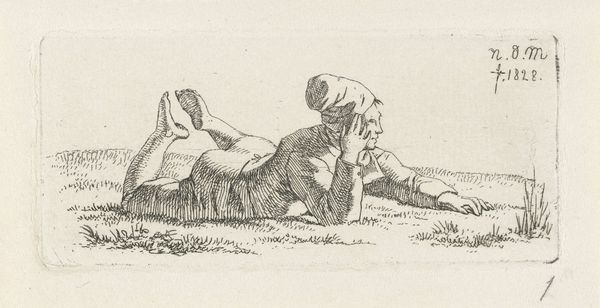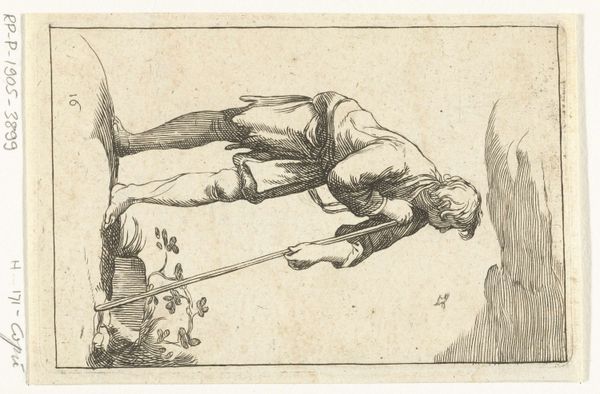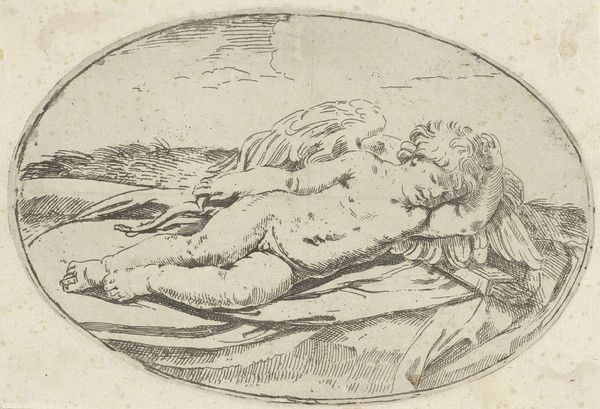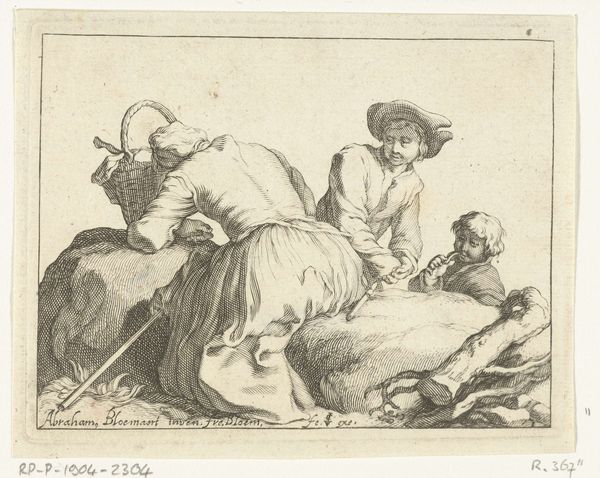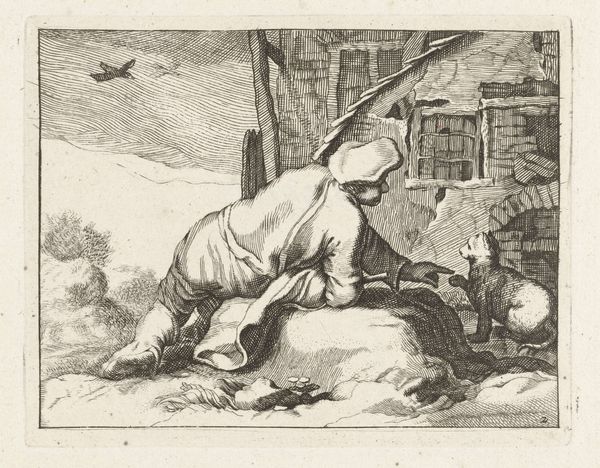
Plate 11: an old man sitting on the ground to left, seen from behind, a peasant woman seen from behind to right in backfround, from 'Caprice faict par de la Bella' 1640 - 1645
drawing, print, etching, engraving
drawing
baroque
etching
landscape
genre-painting
engraving
Dimensions: Sheet: 2 3/8 x 3 7/16 in. (6.1 x 8.8 cm) Plate: 2 x 3 1/8 in. (5.1 x 8 cm)
Copyright: Public Domain
Curator: Gosh, this piece just exudes melancholy, doesn’t it? Editor: It does. We’re looking at "Plate 11," an etching by Stefano della Bella, created sometime between 1640 and 1645. You can find it right here at The Met. The artist uses etching and engraving to depict an old man in repose against the backdrop of what seems like a pastoral scene. Curator: Pastoral in the distance maybe, but up close it is pretty raw. Look at that man’s posture, so utterly dejected, his gaze lost somewhere in the dirt. And then you have the woman way in the back, oblivious in her own journey. Makes you wonder about the isolation of individual experience. Editor: Isolation is a key theme here. But the symbolism goes further. The old man, seemingly burdened, can be seen as a representation of Saturn, or Cronus in Greek mythology, the god often associated with melancholy, old age, and even the passage of time itself. That far-off figure could just as easily stand for youth or perhaps opportunity missed. Della Bella was very into theater and spectacle, maybe these characters are his stage players? Curator: Ah, theatrical melancholy. A drama in miniature. Della Bella has framed an experience we all have and then stylized it so well, it takes on broader cultural meaning! Is that kind of visual echo on purpose or does meaning emerge through its history of viewing? I find that so amazing about images. Editor: It's likely both, right? Della Bella tapped into enduring archetypes—the burdened elder, the distant promise—and the printing press did the rest, imbuing this image with an emotional weight across generations. I am thinking that visual archetypes endure and accumulate resonance as people continuously reinterpret the meaning of their shared history, that they stand as symbols in themselves. Curator: It really underscores how even seemingly simple scenes can become charged with emotion and cultural significance. Gives you pause, doesn't it? Editor: It does. It makes you think about how deeply interwoven our individual experiences are with the grand, sprawling tapestry of human culture and art history, echoing down through the centuries in the humblest and grandest ways.
Comments
No comments
Be the first to comment and join the conversation on the ultimate creative platform.
